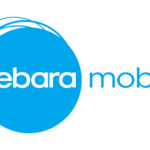
In today’s digital landscape, the need for robust cybersecurity has never been more critical. The rapid proliferation of data and the increasing sophistication of cyber threats have made traditional security models obsolete. This is where Zero Trust in Data comes into play, reshaping the paradigm of cybersecurity for Backup and Disaster Recovery (BDR). In this comprehensive guide, we delve into the world of Zero Trust, exploring its principles, implementation, and its significant implications for BDR.
Understanding Zero Trust
Zero Trust is not just a buzzword; it’s a fundamental shift in how organizations approach security. The traditional perimeter-based security model relied on the notion that once inside the network, all users and devices could be trusted. However, as cyber threats evolved, this model proved inadequate. Zero Trust challenges this assumption, advocating that organizations should trust no one, neither outside nor inside the network. Instead, trust should be continuously verified through robust authentication and authorization measures.
Key Principles of Zero Trust
To implement Zero Trust effectively, organizations need to embrace the following principles:
Verify Identity: Ensure that every user and device is accurately identified before granting access. Multi-factor authentication (MFA) is a powerful tool for this.
Least Privilege Access: Limit access to only the resources necessary for the job, reducing the attack surface.
Micro-Segmentation: Divide the network into smaller, isolated segments, making lateral movement for attackers extremely challenging.
Continuous Monitoring: Regularly assess user and device behaviors to detect anomalies and respond promptly.
Implementing Zero Trust for BDR
Backup and Disaster Recovery is a mission-critical function in any organization. It ensures data availability in case of unforeseen disasters or data breaches. Implementing Zero Trust in BDR can safeguard this vital process.
Data Encryption
Utilize strong encryption techniques to protect your data at rest and in transit. This prevents unauthorized access even if a breach occurs.
Access Control
Implement rigorous access controls, allowing only authorized personnel to interact with the BDR system. Regularly review and update these permissions to reflect the changing organizational landscape.
Secure Data Backup
Choose a secure location for your backups, whether it’s on-premises or in the cloud. Ensure the storage environment follows Zero Trust principles, employing encryption and access controls.
Incident Response Plan
Prepare a robust incident response plan specifically for BDR. In case of a security breach, this plan should guide your organization on how to recover and ensure the integrity of your backups.
Benefits of Zero Trust in BDR
The integration of Zero Trust in BDR offers several key advantages:
- Enhanced Data Protection: Data is safeguarded at all times, reducing the risk of data loss in the event of an attack.
- Improved Resilience: Even if the primary network is compromised, the isolated BDR system remains secure and available.
- Regulatory Compliance: Meeting stringent data protection regulations becomes more manageable with the rigorous security measures of Zero Trust.
- Reduced Downtime: Faster recovery and reduced downtime in the face of data disasters.
Final Words
Zero Trust in Data is not merely a trend but a necessity in our interconnected world. Organizations that embrace this paradigm shift in cybersecurity for Backup and Disaster Recovery stand a better chance of safeguarding their data and operations. With the principles of identity verification, least privilege access, micro-segmentation, and continuous monitoring, they can protect their most valuable asset – data.
Commonly Asked Questions
1. Is implementing Zero Trust in BDR a complex process?
Implementing Zero Trust can be complex, but it is achievable with careful planning and the right tools. Many organizations opt for gradual implementation, starting with critical areas like BDR.
2. What are the challenges of Zero Trust in BDR?
Challenges may include initial setup costs, user training, and potential disruption to existing workflows. However, the long-term benefits far outweigh these challenges.
3. Does Zero Trust in BDR impact performance?
Zero Trust can have a minimal impact on performance, primarily during the initial setup phase. However, the long-term security gains are worth the investment.
4. Can small businesses benefit from Zero Trust in BDR?
Absolutely, Zero Trust is not exclusive to large enterprises. Small businesses can tailor their implementation to suit their unique needs and budget.
5. What tools are available for implementing Zero Trust in BDR?
There are various cybersecurity solutions and platforms designed for Zero Trust implementation, such as identity management systems, secure access service edge (SASE) solutions, and micro-segmentation tools.
Advertisement







